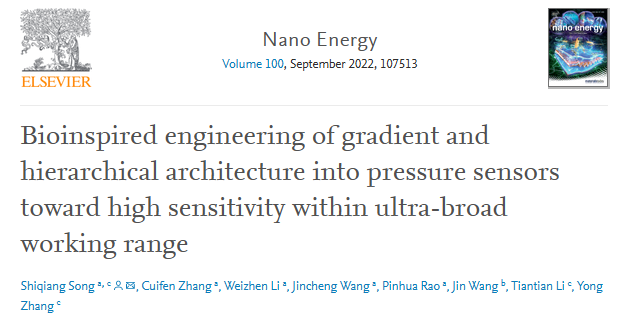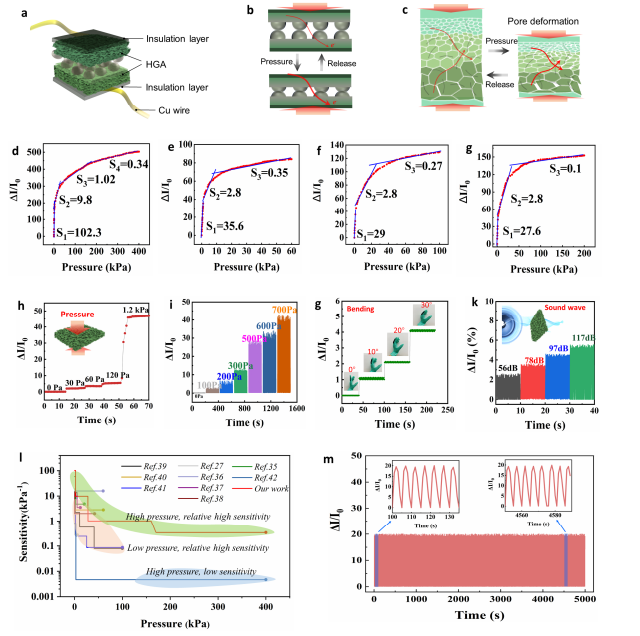Recently, Song Shiqiang, associate professor of the School of Chemistry and Chemical Engineering of our university, has made important research achievements in the field of flexible wearable devices, and the related research was published in the international top journal Nano Energy (impact factor 19.069, top journal of the basic/upgraded version of the Chinese Academy of Sciences) under the title of Bioinspired Engineering of Gradient and Hierarchical Architecture into Pressure Sensors toward High Sensitivity within Ultra road Working Range, It was highly praised by the reviewers.
Associate Professor Song Shiqiang is the first author and corresponding author, postgraduate Zhang Cuifen is the co-first author, and Shanghai University of Engineering and Technology is the first completion unit. This research work was supported by the Youth Fund of the National Natural Science Foundation of China (No. 52003151). It is reported that this paper was promoted and reported by the polymer official account Polymer Science and Technology and China Polymer Network, with more than 4300 readings on that day.

Introducing hierarchical microstructure on the soft material surface can effectively improve the sensitivity of the pressure sensor, however, the high sensitivity generates only at a low pressure range because of the limited compressibility of the microstructure and the incompressibility of the soft matrix. Herein, we first report a facile strategy of bioinspired engineering of hierarchical and gradient structures that can simultaneously improve the sensitivity and broaden the pressure working range. Such hierarchical and gradient structures feature hemispherical arrays and gradient pores that allow the structural deformation from tiny pressure to high pressure, significantly boosting the sensitivity over the full pressure range. By integrating these unique structures on one sensor, the sensor exhibits an ultrahigh sensitivity over a broad pressure regime (i.e., from 102.3 kPa−1 within 0–1.9 kPa to 0.34 kPa−1 within 169.6–400 kPa), a fast response time (35 ms), low limit detection (0.4 Pa) and excellent stability (>5000). The facile strategy and structure design achieve high sensitivity and broad pressure working range for an advanced pressure sensor, endowing it with wide applications, including pressure/weight monitoring, real-time human pulse wave measurements, joint motion detection and human-computer interaction.


